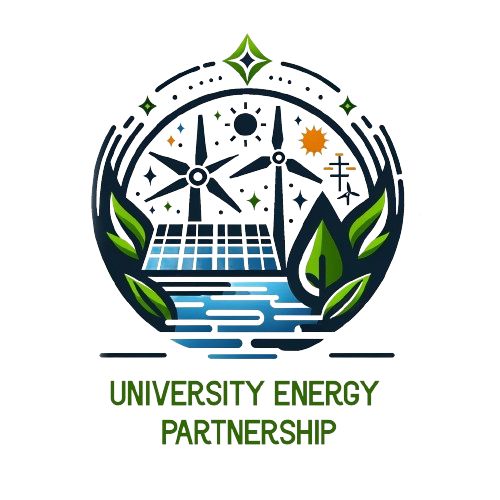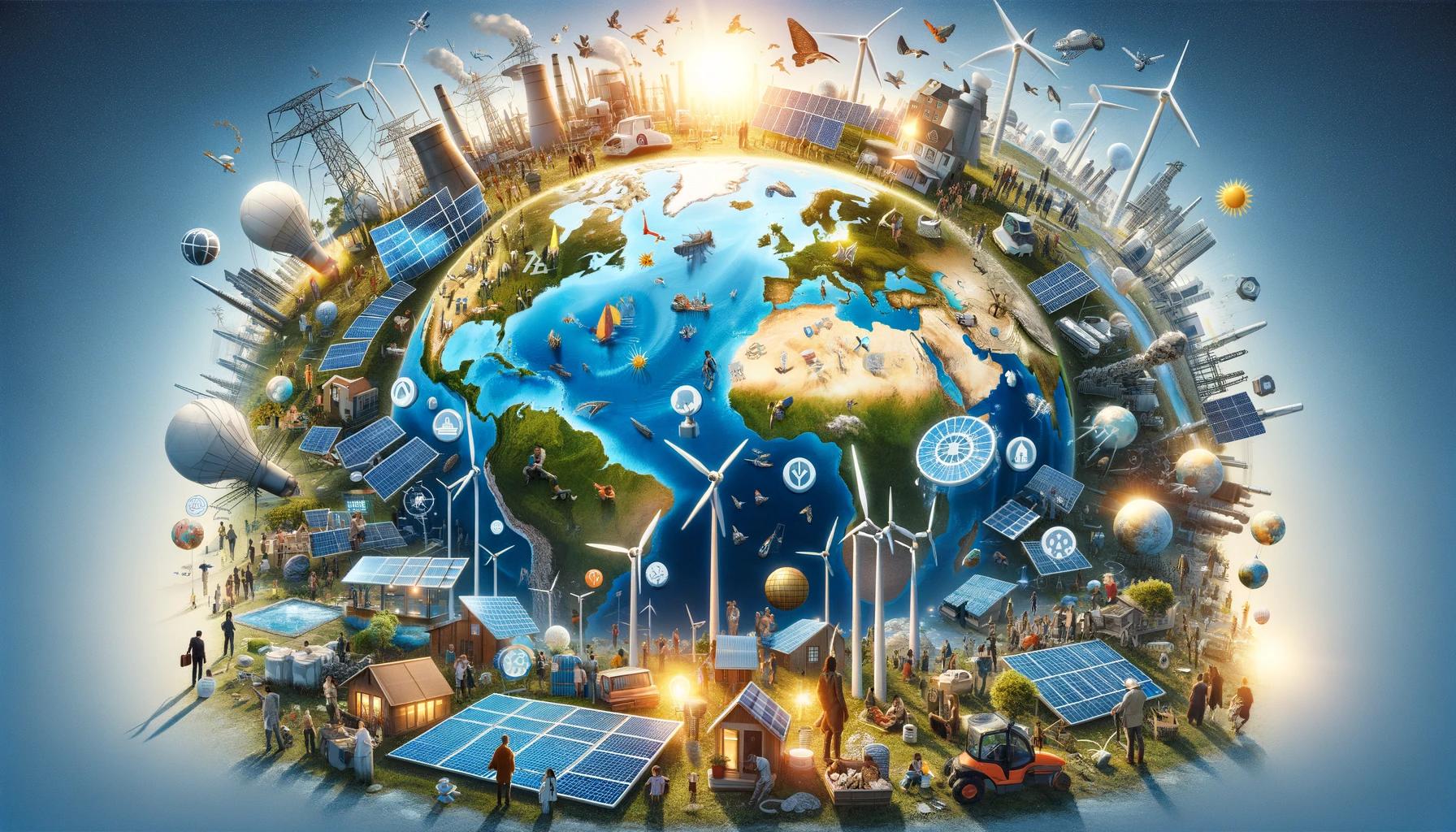Introduction
In recent years, there has been a significant global shift towards renewable energy sources as the world grapples with the environmental and economic challenges posed by fossil fuels. This transition is driven by a growing awareness of climate change, the need for energy security, and the desire to reduce greenhouse gas emissions. This article will delve into the key factors behind the global shift towards renewable energy sources and examine its impact on the energy landscape.
The Urgency of Renewable Energy
Climate Change Concerns
One of the primary reasons behind the global shift towards renewable energy sources is the urgent need to combat climate change. Burning fossil fuels, such as coal, oil, and natural gas, for energy production releases greenhouse gases into the atmosphere, primarily carbon dioxide (CO2). These gases trap heat and contribute to global warming, leading to rising temperatures, extreme weather events, and disruptions to ecosystems.
Renewable energy sources, including solar, wind, hydroelectric, and geothermal power, offer a cleaner and more sustainable alternative. They produce little to no direct greenhouse gas emissions during electricity generation, making them a crucial tool in mitigating climate change.
Energy Security
Another driving factor behind the shift to renewables is energy security. Many countries heavily rely on imported fossil fuels, which can lead to economic vulnerabilities and geopolitical tensions. By harnessing domestic renewable energy sources, nations can reduce their dependence on foreign energy supplies and enhance their energy security.
The Growing Popularity of Renewable Technologies
Solar Power
Solar power has witnessed remarkable growth in recent years. The declining cost of photovoltaic (PV) panels, coupled with government incentives and subsidies, has made solar energy an attractive option for both residential and commercial users. In many regions, solar power is now cost-competitive with fossil fuels, driving its widespread adoption.
Wind Energy
Wind energy is another key player in the renewable energy landscape. Advances in wind turbine technology have resulted in more efficient and cost-effective systems. Wind farms, both onshore and offshore, have become increasingly common, harnessing the power of the wind to generate electricity. Countries with strong wind resources, such as Denmark and Germany, have made significant strides in wind energy production.
Hydropower
Hydropower, which utilizes the energy of flowing water to generate electricity, remains one of the most established renewable energy sources. Large-scale hydroelectric dams provide a stable and reliable source of power in many regions. However, concerns about environmental impacts, such as habitat disruption and the alteration of river ecosystems, have led to a shift towards smaller-scale, run-of-river hydropower projects.
Geothermal Energy
Geothermal energy taps into the Earth’s natural heat from within. It is a reliable and consistent source of power, especially in areas with active geothermal resources. Iceland, for example, relies heavily on geothermal energy for its electricity and heating needs. As technology advances, geothermal energy’s potential to provide clean, baseload power continues to grow.
Government Policies and Incentives
Government policies play a pivotal role in driving the adoption of renewable energy sources. Many countries have implemented a range of incentives and regulations to promote clean energy development. These policies include:
Renewable Portfolio Standards (RPS)
Renewable Portfolio Standards mandate that a certain percentage of a state or country’s electricity must come from renewable sources by a specific date. This encourages utilities to invest in renewable energy projects to meet these requirements.
Feed-in Tariffs (FiTs)
Feed-in Tariffs guarantee a fixed payment for renewable energy producers for each unit of electricity they generate. This financial incentive encourages individuals and businesses to invest in renewable energy systems and sell excess power back to the grid.
Tax Credits and Subsidies
Tax credits and subsidies reduce the upfront costs of installing renewable energy systems. These financial incentives make clean energy technologies more accessible to a wider range of consumers.
Carbon Pricing
Carbon pricing mechanisms, such as carbon taxes or cap-and-trade systems, put a price on carbon emissions, making fossil fuels more expensive and renewables comparatively more attractive.
The Role of Technological Advancements
Advancements in renewable energy technologies have played a crucial role in their growing popularity. These innovations have improved efficiency, reduced costs, and expanded the potential for renewable energy sources.
Energy Storage
One of the significant challenges of renewable energy sources like solar and wind is their intermittent nature. Energy storage technologies, such as advanced batteries, have made it possible to store excess energy generated during periods of high production for use when energy demand is high or during periods of low renewable energy output.
Smart Grids
Smart grids use digital technology to enhance the efficiency and reliability of the electrical grid. They enable better integration of renewable energy sources and facilitate two-way communication between utilities and consumers, allowing for more efficient energy management.
Grid Integration
Grid integration involves optimizing the integration of renewable energy sources into the existing power grid. This includes improving transmission infrastructure and grid management systems to accommodate the variability of renewable energy generation.
Economic Benefits of Renewable Energy
The global shift towards renewable energy sources is not only driven by environmental concerns but also by the economic benefits they offer.
Job Creation
The renewable energy sector has become a significant source of employment. Jobs in renewable energy span various industries, including manufacturing, installation, maintenance, and research and development.
Energy Independence
Reducing reliance on imported fossil fuels can enhance a nation’s energy independence and reduce vulnerability to energy price fluctuations in global markets.
Economic Growth
Investments in renewable energy projects stimulate economic growth by creating demand for equipment, materials, and services. Additionally, they attract private investments and foster innovation.
Challenges and Barriers
While the transition to renewable energy sources is promising, it is not without challenges and barriers.
Intermittency
Solar and wind energy sources are intermittent, meaning they depend on weather conditions and time of day. This intermittency can lead to grid instability and necessitates energy storage solutions.
Energy Storage Costs
While energy storage technologies have improved, the cost of batteries and other storage systems can still be prohibitive for widespread adoption.
Infrastructure Upgrades
Integrating renewable energy sources into existing grids often requires substantial infrastructure upgrades, which can be expensive and time-consuming.
Energy Transition Costs
Transitioning from fossil fuels to renewables may involve the early retirement of existing fossil fuel infrastructure, resulting in stranded assets and potential economic challenges for regions heavily reliant on fossil fuel industries.
Final Words
The global shift towards renewable energy sources is driven by a combination of environmental concerns, energy security, technological advancements, and government policies. The growing popularity of solar, wind, hydropower, and geothermal energy is reshaping the energy landscape and offering significant economic benefits. However, challenges related to intermittency, energy storage, infrastructure, and transition costs must be addressed to ensure a successful transition to a more sustainable and clean energy future. With continued innovation and global cooperation, renewable energy sources can play a central role in mitigating climate change and securing a sustainable future for future generations.

